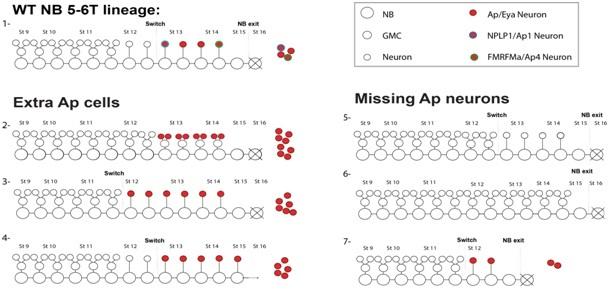Conclusion
In this study, a number of novel genes with a regulatory role in the Ap cluster are reported and the certain mutation on their sequence is identified. However, the detailed knowledge of the cascades that they are involved in and neuronal differentiation modes which leads to the phenotype of interest in mutant flies is the future prospects and consideration of this study.
There are different possible models for NB5-6T lineage division and Ap cluster generation that can explain abnormalities observed in the mutants Ap cluster phenotype. Observing extra number of Eya/Ap neurons within the cluster might be due to the various potential possibilities; first is when the switch point between proliferation and specification is brought forward, second is due to late NB apoptosis and cell cycle exit failure, third is when NB produce neurons at type II asymmetric division (instead of type I). Despite the fact that most of the genes involved in neuro-development are fairly conserved between the fly and vertebrates, the function and molecular pathways in which these genes are involved are currently unknown. Utilizing the higher resolution reporter markers and miss/over expression of various regulatory genes and taking advantage of enormous genetics tool available for fly research, might help us to understand which gene is involved in which pathway and induce NB goes under which division model.

Responsible for this page:
Director of undergraduate studies Biology
Last updated:
05/18/12
